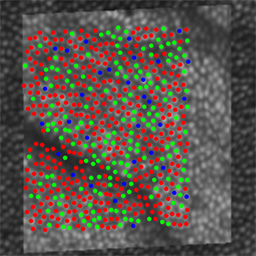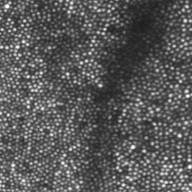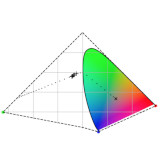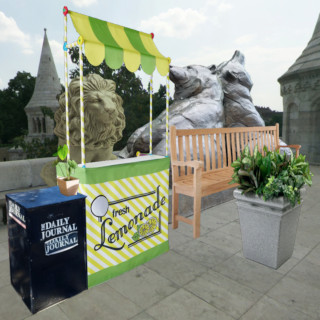|
I am a computer science PhD student at UC Berkeley, advised by Ren Ng. I have broad research interests including computer graphics, computational photography, and human vision. My most recent work is focused on understanding the earliest stages of the human visual system through cell-by-cell psychophysics. In my free time, I enjoy video game development and 3D animation. |

|
|
|

|
James Fong*, Hannah K. Doyle*, Congli Wang*, Alexandra E. Boehm, Sofie R. Herbeck, Vimal Prabhu Pandiyan, Brian P. Schmidt, Pavan Tiruveedhula, John E. Vanston, William S. Tuten, Ramkumar Sabesan, Austin Roorda, Ren Ng Science Advances, 2025 We introduce a principle, Oz, for displaying color imagery: directly controlling the human eye's photoreceptor activity via cell-by-cell light delivery. On this display, concentrating light into the M-type cone cells produces a novel color outside the natural human gamut. Subjects describe the color as a blue-green of unprecedented saturation, and indicate that it is more saturated than a near-monochromatic laser of equivalent hue. |

|
Vimal Prabhu Pandiyan, Sierra Schleufer, Emily Slezak, James Fong, Rishi Upadhyay, Austin Roorda, Ren Ng, Ramkumar Sabesan Biomedical Optics Express, 2022 Thorough evaluation of optoretinography (ORG) in comparison to densitometry, which are two methods for determining the L/M/S spectral type of cone cells in awake humans. My primary role in this project was the development of the Retina Map Alignment Tool for efficiently finding corresponding cones between the datasets generated by each method. |

|
Jay Shenoy*, James Fong*, Jeffrey Tan, Austin Roorda, Ren Ng ICCV, 2021 project page / video Computational imaging-based method for jointly estimating the motion and appearance of the human retina using data collected on an adaptive optics scanning laser ophthalmoscope. |

|
James Fong Master's Thesis, 2021 In collaboration with the folks at Roorda Lab, I was able to display world-fixed squares of cyan and orange with only green laser light. I developed a high-performance C++/CUDA software layer to enable per-photoreceptor computer graphics via an adaptive optics scanning laser ophthalmoscope. |
|
|

|
Graduate Student Researcher | 2021–Present
|

|
Computer Vision, ML & Computational Photography Research Intern | Summer 2022
|

|
Undergraduate Student Instructor | Spring 2019
|

|
Software Developer (volunteer) | 2017–2018
|

|
Student Intern, IT Programmer | Summer 2014, Summer 2015
|
|
|

|
CS 294-26: Computational Photography, Spring 2020 project page / video / code Tool for easily making photo collages with accurate vanishing point geometry. |

|
CS 184: Computer Graphics, Spring 2018 project page / video
Real-time method for adding extra detail onto mesh surfaces. This is similar to traditional
displacement mapping, but can handle overhangs and does not
rely on tessellation.
|
|
Site template courtesy of Jon Barron |